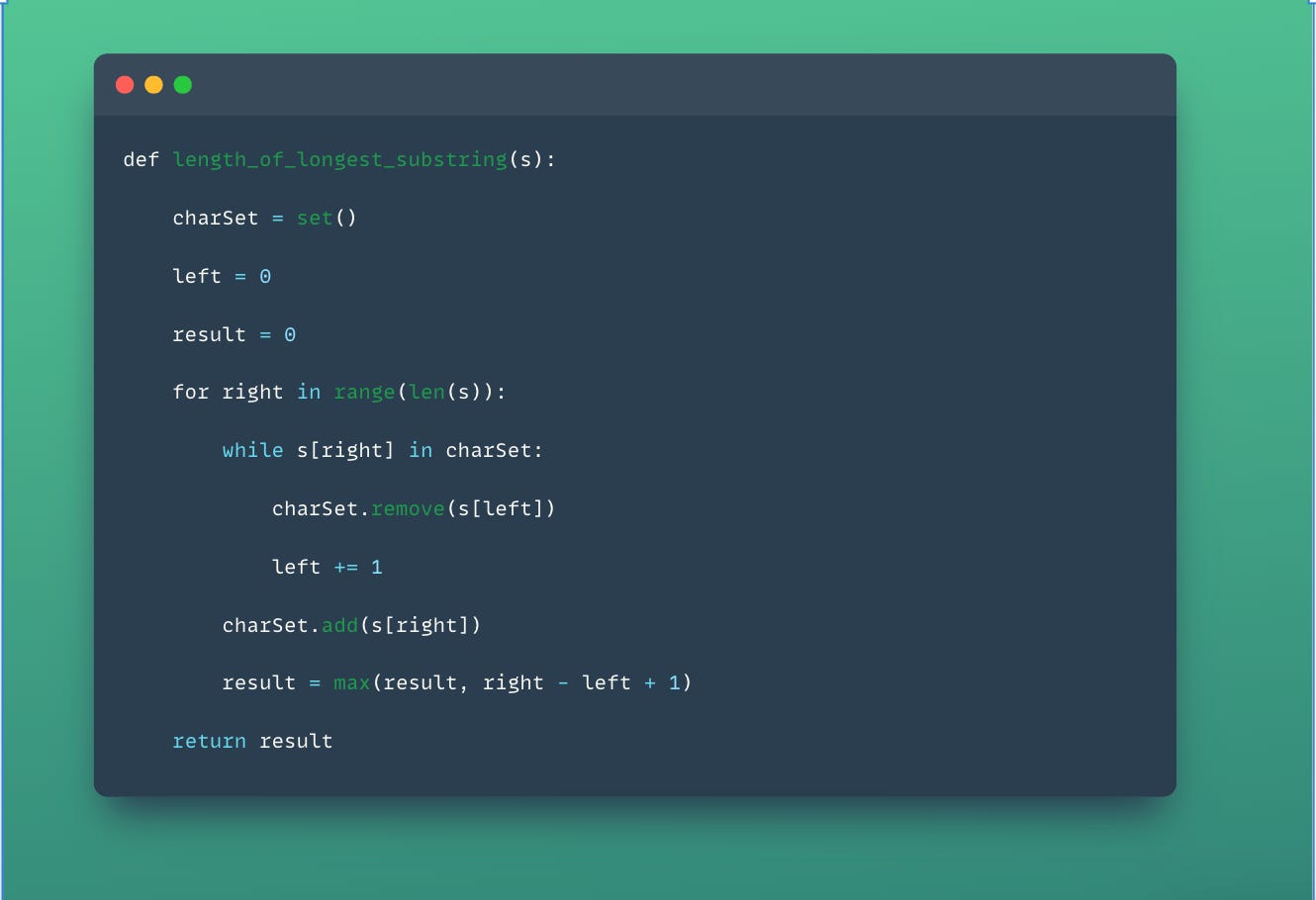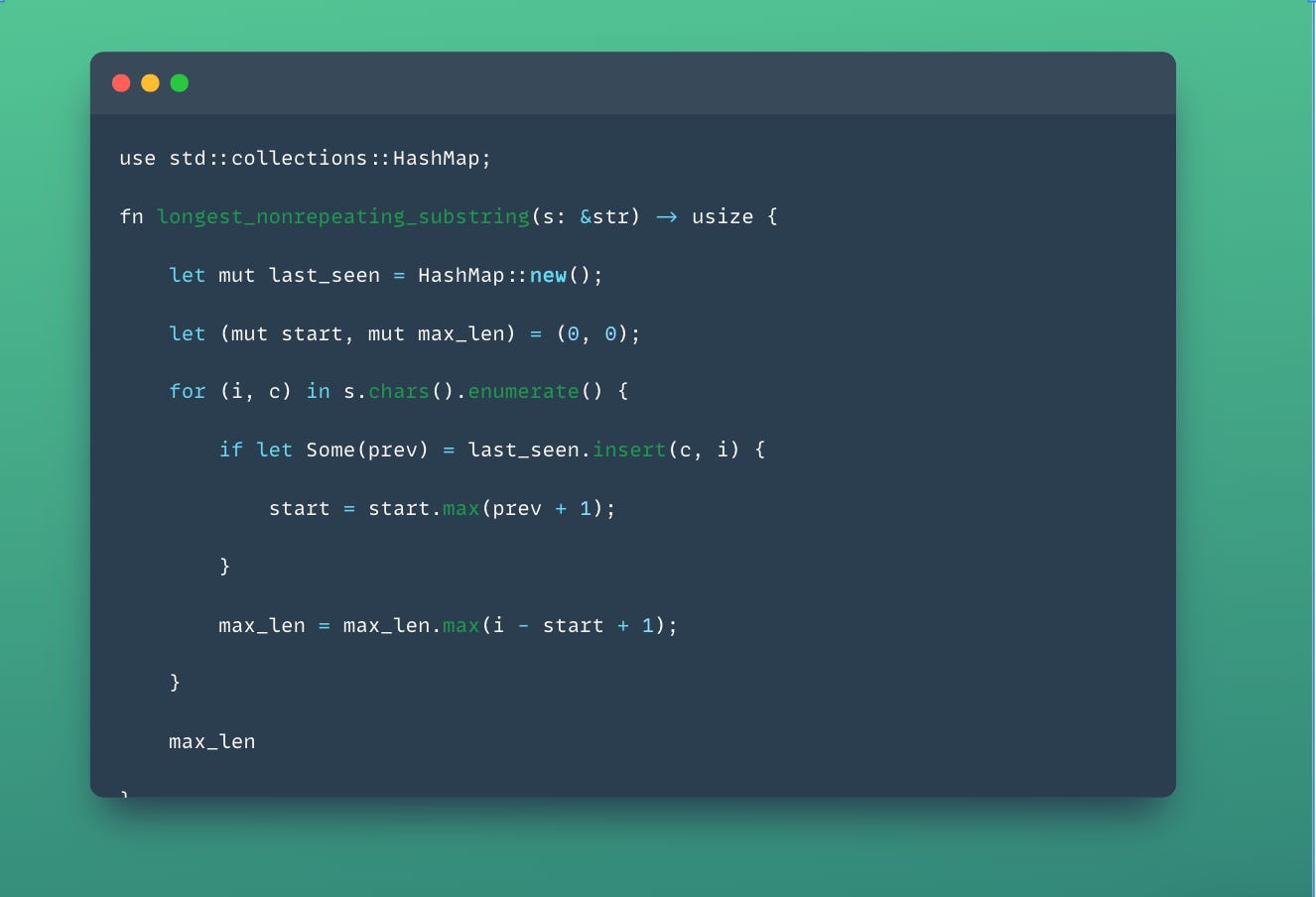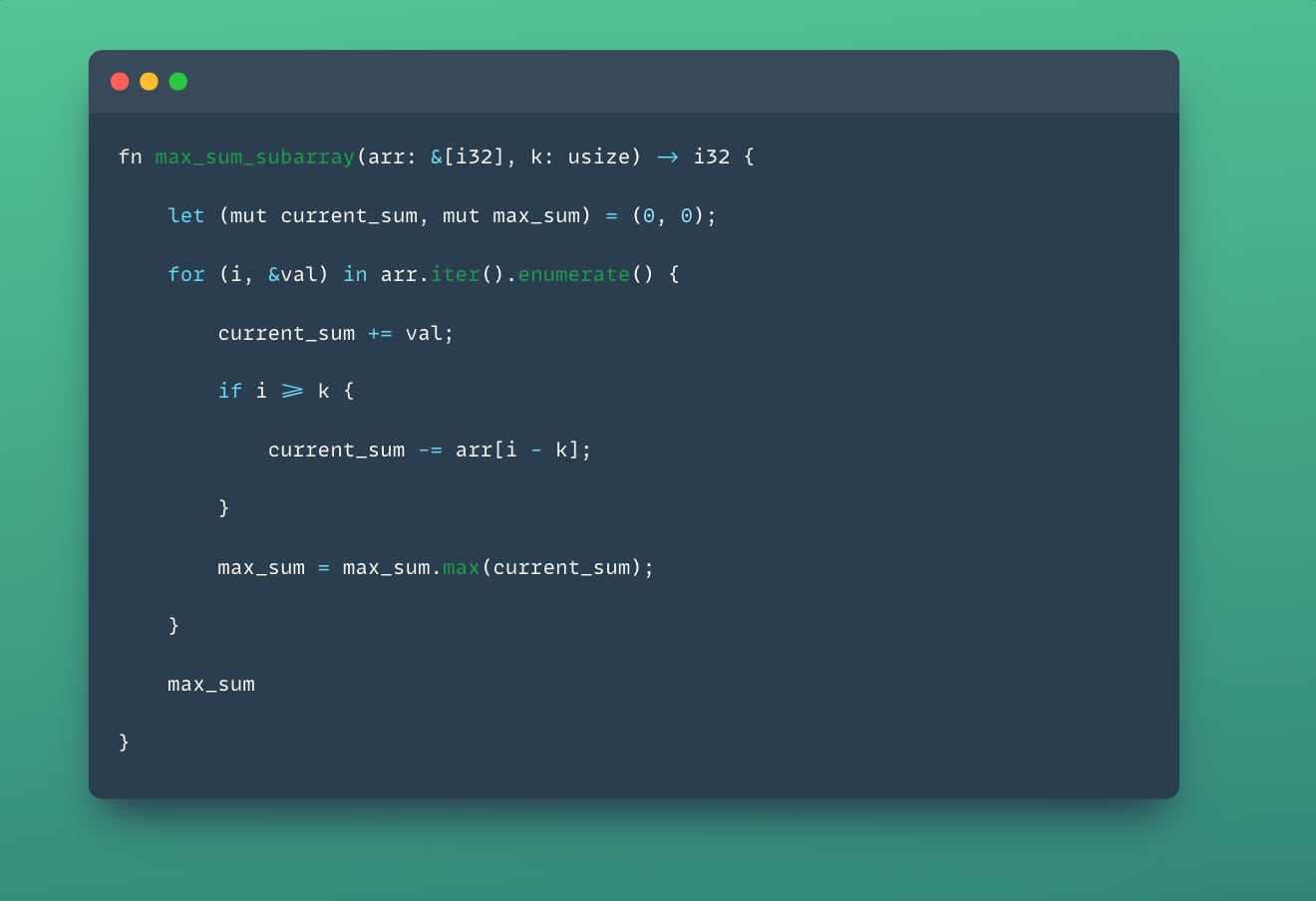Sliding window pattern
Solving problems using this technique
The sliding window technique is a way to track a subset of data in a larger set, usually an array or string. Think of it like looking through a small window at a sequence of numbers or characters and then sliding that window over one position to see the next subset. It's a powerful method used to solve computational problems that require checking or modifying such contiguous segments within an array or string.
Take the problem of finding the longest substring without repeating characters for example. Here's how you might approach it with the sliding window technique:
This piece of code creates a set to track the characters and two pointers representing the window's edges. As we slide the window, we update our set and the answer.
Sliding windows are great because they can reduce the time complexity of brute force solutions, typically from quadratic to linear, by avoiding redundant computation. You're essentially reusing the computations from the previous window.
Overview in Rust
To tackle the problem of the longest substring without repeating characters in Rust, we'd initialize a mutable hashmap to store characters and their positions, and two usize variables to track the window's start and length. As we iterate over characters, we update the hashmap and adjust the window's edges. The window slides by updating the start index when a repeating character is found.
In the case of finding the maximum sum of a sub-array of size `k`, we employ a usize to store the current sum and another to keep track of the maximum sum found. We'd add elements to the current sum until the window reaches size `k`, then slide the window by subtracting the element at the start of the window and adding the new one.
These snippets show a simplified view of how the sliding window technique can be applied in Rust to solve the given problems efficiently and safely, leveraging Rust’s zero-cost abstractions to craft solutions that are both fast and memory-safe without the headache of manual memory management.




